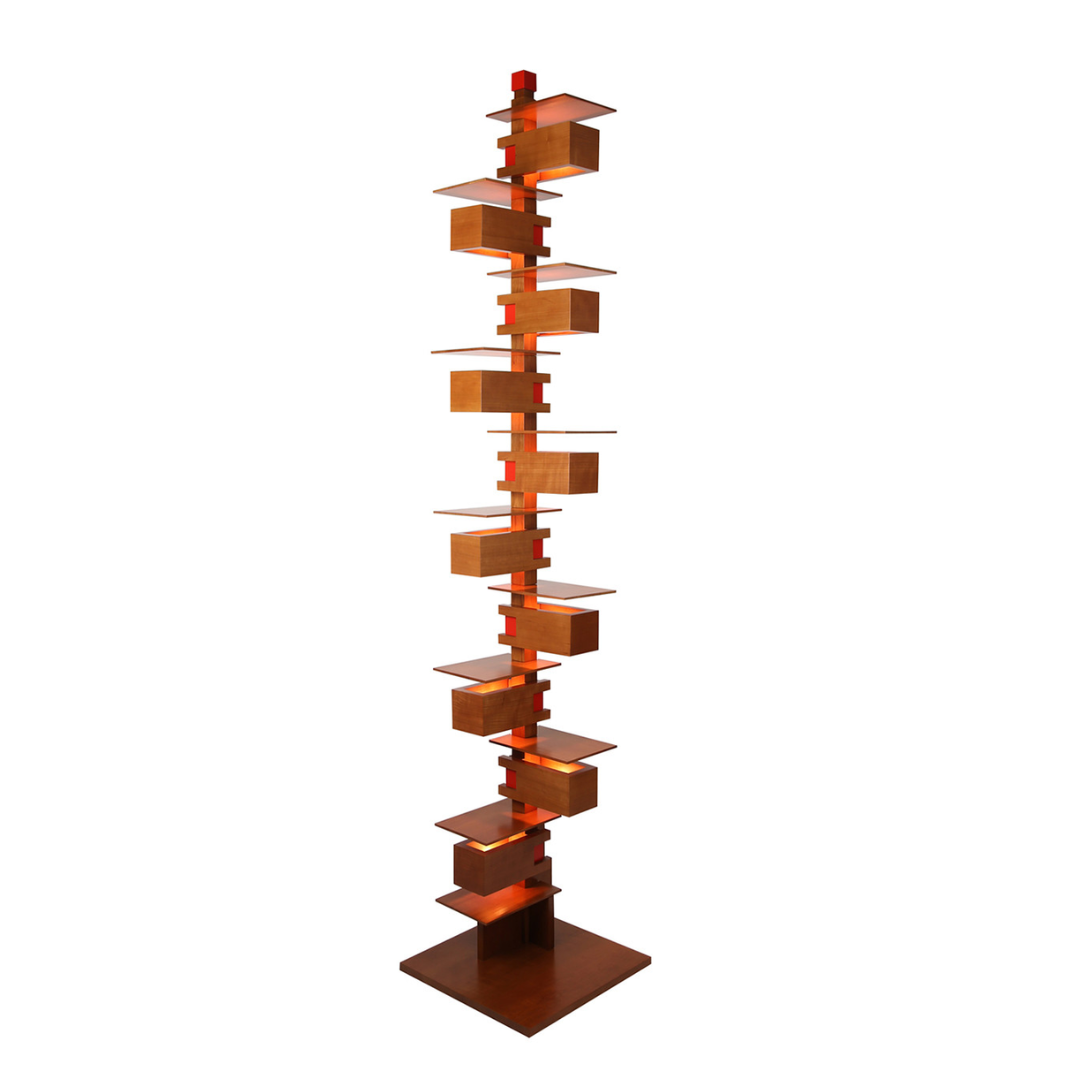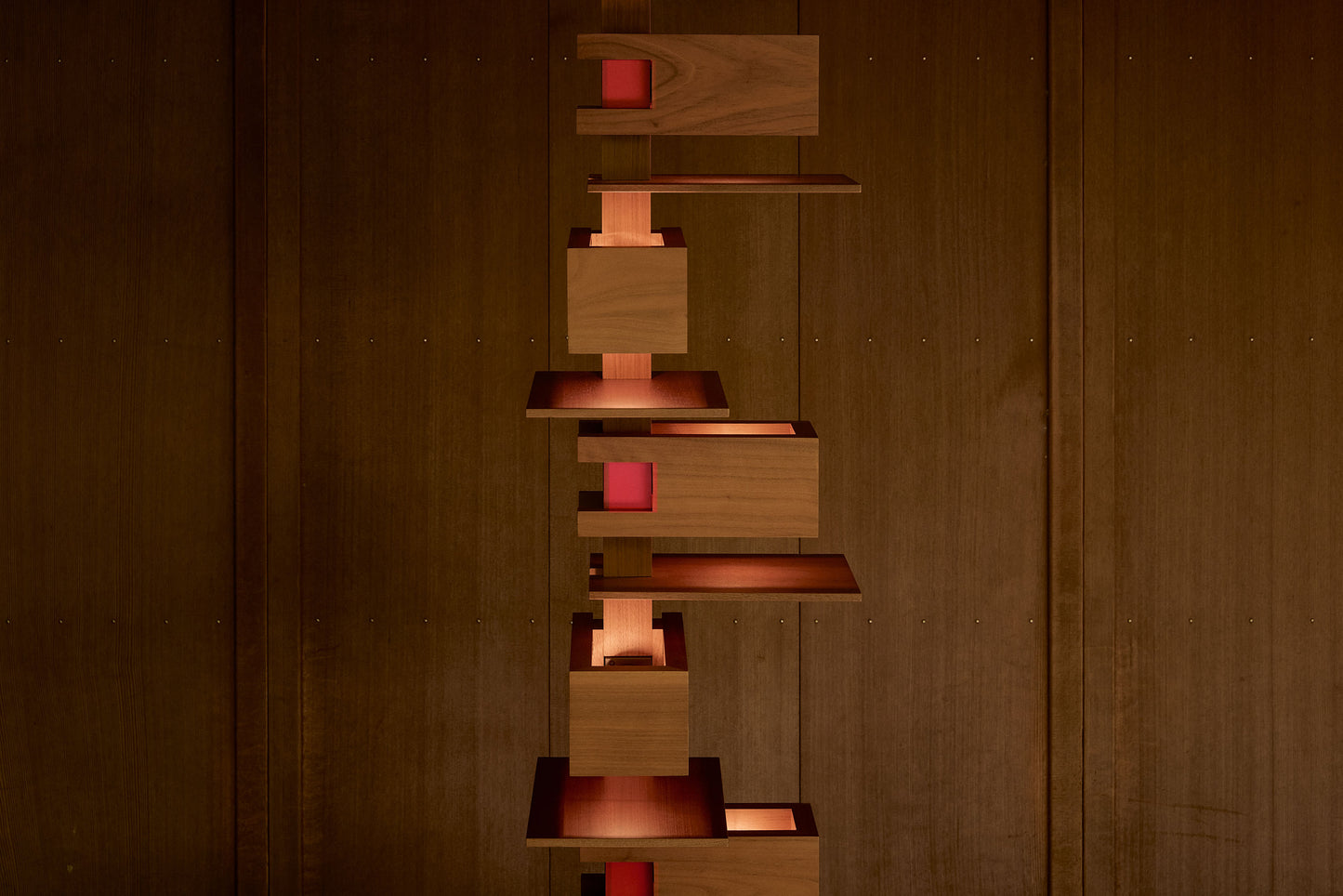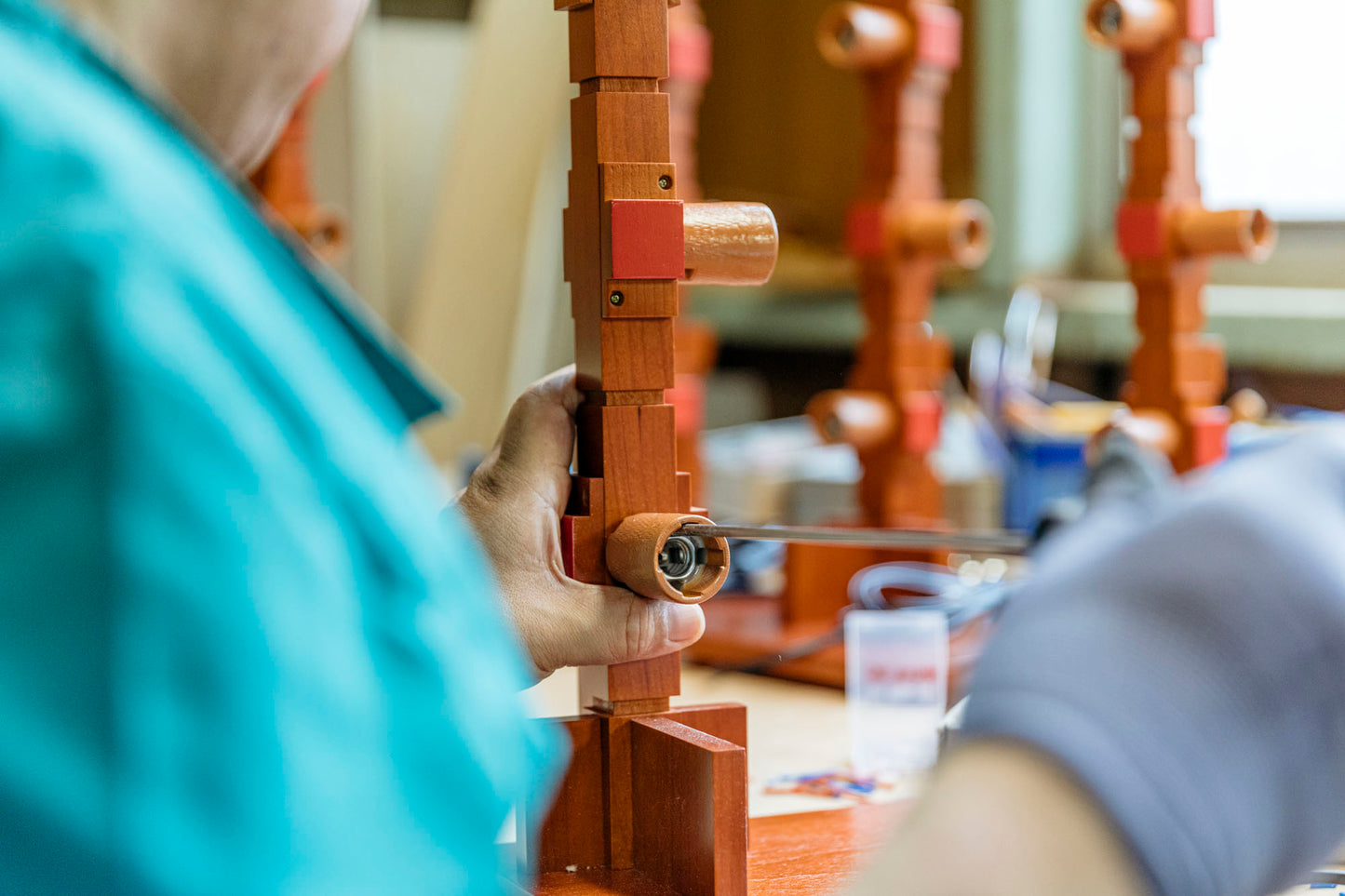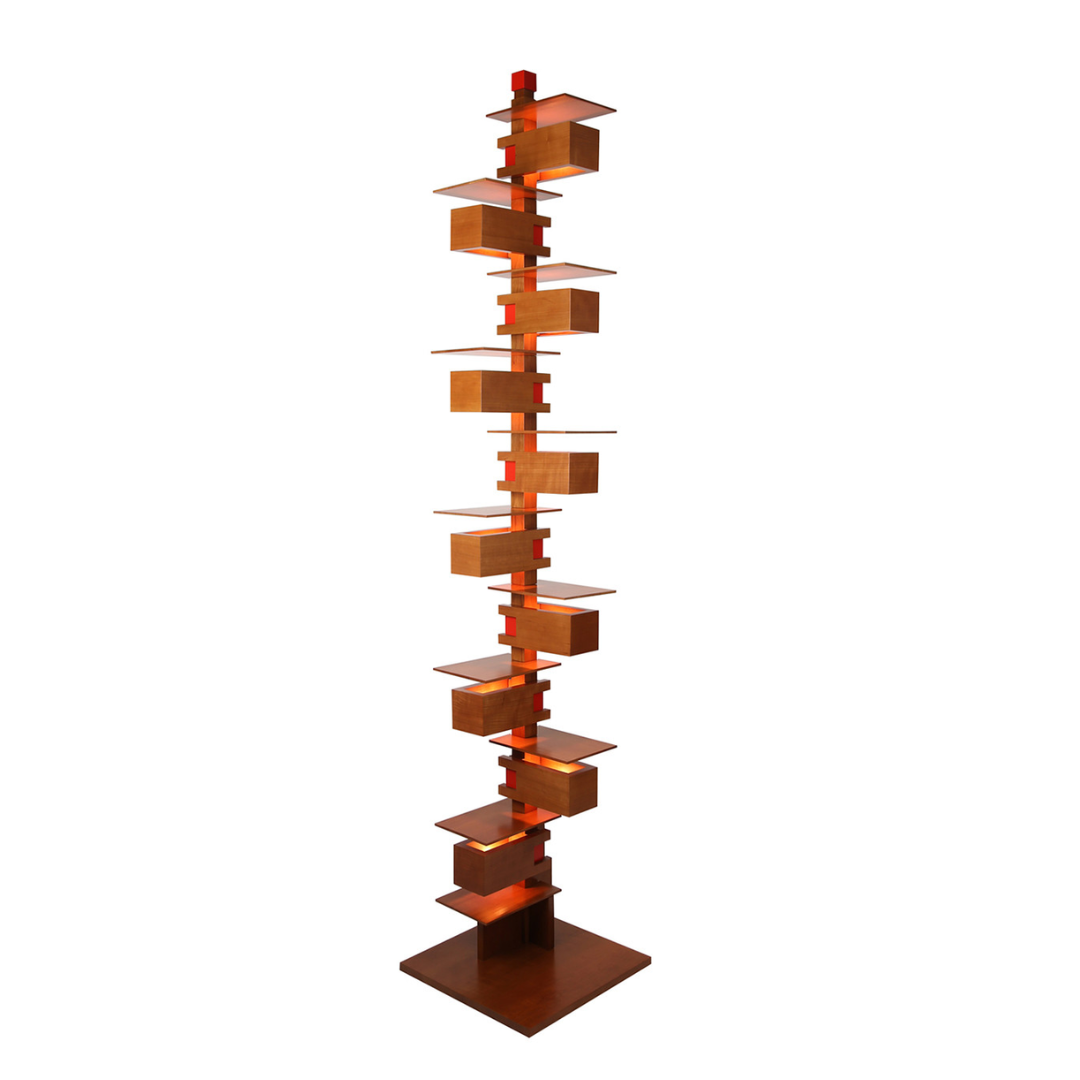Yamagiwa
Taliesin 2 Cherry
Taliesin 2 Cherry
Couldn't load pickup availability
Description
Frank Lloyd Wright (1867-1959) is recognized world-wide as one of the greatest architects of the twentieth century. His work heralded a new thinking in architecture, using innovation in design and engineering made possible by newly developed technology and materials. His creative ability extended far beyond the border of architecture to graphic design, furniture, art glass, textiles, and decorative elements for the home.
In 1933, when Frank Lloyd Wright converted the original gymnasium of his Hillside Home School, located in Spring Green, Wisconsin, into a theater, he designed lighting pendants composed of rectangular light boxes and plywood shields to be suspended from the tall ceiling. These fixtures proved to be a lighting innovation, providing comfortable indirect light without the use of glass or shades. In 1952, when the theater was rebuilt following a fire, Wright modified the design of the original fixtures for use in the dining room, attaching them to the oak beam overhead. He found their soft indirect light so pleasing that he had a standing floor lamp of the same design fabricated for use in his own home, Taliesin.
Dimensions
H2038 x W410 x D410mm, 20.0kg
Details:
Material / Finish: Cherry wood
Colour: Cherry
Lamp quantity: 10
Light source type: E14 Incandescent lamp 25W
Voltage: 220-240V
Wattage: 250W
Designer
Frank Lloyd Wright

Frank Lloyd Wright (1867-1959) is one of the most legendary figures in American architecture of the twentieth century. He was recognized in 1991 by the American Institute of Architects as “the greatest American architect of all the time.” He designed more than 1,000 structures in his 70-year career.
As his masterpieces, Fallingwater and Guggenheim Museum have been designated a UNESCO World Heritage Site. As he is known for coining the term “organic architecture”, he established his architectural style, believing that architecture should be at home in nature. He sets importance on the harmonious relationship between the occupant, structure, and landscape. Prairie houses in the early 20th century and the Usonian houses after the 1930s are remarkable examples of which are emphasized by horizontal lines.
He preferred open space with no partitions or doors and tended to make the ceiling lower to make people feel comfortable. Inspired by nature what it should be like, he designed buildings including furniture and lighting fixtures which are harmonized with surroundings and occupants.
Brand

YAMAGIWA has been creating a timeless design and the aesthetic quality of lighting with Japanese craftsmanship since 1923. The products are made by traditional Japanese craftsmen throughout the process under the tagline “The Art of Lighting.”














